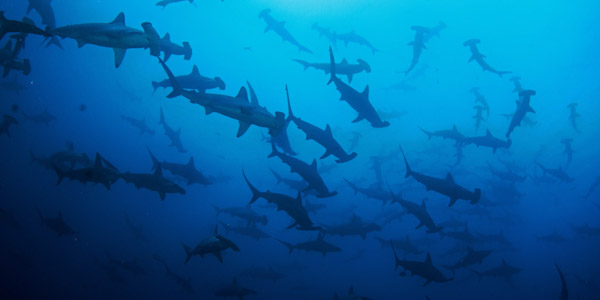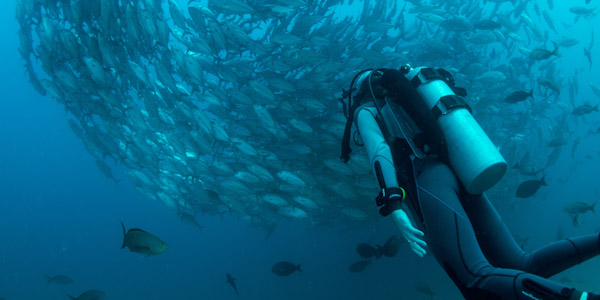August Newsletter
Turtle Island Restoration Network is celebrating two incredible victories for endangered sea turtles this month: successfully petitioning to list Pacific leatherbacks under the California Endangered Species Act and coming to a new legal agreement with the federal government to designate protected critical habitat for green sea turtles! At the same time, wildfires in California and hurricanes in Texas have potentially put our offices in harm's way and some of our staff are under evacuation orders. To our many supporters in the Bay Area, across California and along the Gulf coast, we hope you and yours are staying safe during this time.

Federal Government Agrees to Protect Green Sea Turtle Habitat
The U.S. Fish and Wildlife Service and National Marine Fisheries Service must designate protected critical habitat for green sea turtles under a new legal agreement with Turtle Island Restoration Network. Sea-level rise, plastic pollution and global warming threaten green sea turtle habitat. The agreement requires proposed protections by June 30, 2023. The agencies will likely consider proposing protections for green sea turtle nesting beaches in Florida, Georgia, North Carolina and South Carolina, as well as offshore oceanic habitat in the Southeast and on the West Coast. The agreement stems from a January lawsuit filed by TIRN, the Center for Biological Diversity and Sea Turtle Oversight Protection. In 2016 the two federal agencies found that growing climate change and sea-level-rise threats mean the turtles still need Endangered Species Act protection. Despite those threats — particularly to low-lying nesting beaches — the agencies failed to protect the turtle’s critical habitat under the Act.

California Moves to Protect Declining Leatherbacks
The California Fish and Game Commission voted 5-0 in August to advance leatherback sea turtles to candidacy under the state’s Endangered Species Act! The vote follows a June 2020 recommendation by the California Department of Fish and Wildlife that increased protections may be warranted and brings these ancient, endangered sea turtles one step closer to getting the protections they deserve. The vote was fortified by members and volunteers of Turtle Island Restoration Network who provided public testimony at the meeting to voice their support for granting leatherbacks protections under California's Endangered Species Act. We want to send a huge thank you to our supporters for joining us at the meeting and taking part in such a critical process to prevent leatherbacks from going extinct in our lifetimes!

Plastics in the Time of Coronavirus
As we adjust to the new certainty of living with COVID-19, we recognize the importance of kindness and camaraderie in our community during these difficult times. Marine debris has been a growing issue since plastics were introduced in the mid-20th century, but in recent months, the amount of plastic waste in our environment is surging. This virus has wreaked havoc on the economy, dropping oil prices to levels not seen since the 2008 recession. Unfortunately, as oil prices plummet, the cost to produce new plastics becomes inexpensive, deeming recycling cost-inefficient. Coupled with a dire increase in the medical plastics field, single-use plastics are once again booming. Worldwide, organizations like TIRN are finding discarded gloves and masks throughout the environment.

Potential Budget Cuts Threaten Texas Turtles
The Kemp’s ridley is a critically endangered sea turtle species found primarily in the Gulf of Mexico. This tiny turtle — which is also the Texas state sea turtle — has been brought back from the brink of extinction by work done to protect them in both the U.S. and Mexico. This critical work is now at stake as the U.S. Department of the Interior plans budget cuts for sea turtle programs at Padre Island National Seashore. Recovery of endangered sea turtles is our first priority, and we strongly call for the Department to fully fund the work done at Padre Island National Seashore and the Division of Sea Turtle Science and Recovery. Please take a moment to tell Secretary David Bernhardt to continue funding sea turtle programs at Padre Island to ensure critically endangered and threatened sea turtles in the Gulf of Mexico survive.

Fishing Fleet in Galápagos Exemplifies Urgency to Support Bilateral Conservation Measures
On July 16 the Ecuadorian navy spotted more than 250 foreign vessels fishing on the international waters close to the Galápagos exclusive economic zone. According to The Guardian, the flotilla is mainly composed by Chinese flagged long liners, squid fishing boats and supply and storage ships. Due to the absence of regulations on the high seas, we still do not know many details about the impact that the fishing fleet is having. However, due to its magnitude we can assume that it represents a threat to the rich biodiversity that inhabits these waters. The current situation in Galápagos exemplifies the urgency of promoting conservation measures that go beyond national borders. Although outside the limits of the marine reserve and beyond the national jurisdiction of Ecuador, such an immense fleet represents a threat to marine species that does not recognize these limits.

7 Leatherback Populations at High Extinction Risk
A new review of leatherback sea turtle science concludes that seven distinct populations of leatherback sea turtles face a high extinction risk. The National Marine Fisheries Service and U.S. Fish and Wildlife Service announced a finding that all seven leatherback sea turtle populations remain endangered, denying a petition by the commercial fishing industry to relax some protections. If trends continue, the review found, U.S. leatherback sea turtles in the Atlantic will decline by half within 30 years. Pacific annual nest counts at the two most important beaches (Jamursba-Medi and Wermon, both in Indonesia) declined annually by 5.7% and 2.3% respectively in the most recent monitoring period. The announcement confirmed that seven distinct populations of leatherback sea turtles exist around the world, and all meet the definition for endangered species. The species is already listed as endangered throughout its range under the Endangered Species Act. The Services did not propose changes to the existing global listing.

WATCH: Leatherback Swimming in Monterey Bay
Did you know leatherback sea turtles swim across the Pacific Ocean to feed on jellyfish off the West Coast? You can watch an incredible video taken by Joyce Moore of a leatherback swimming in Monterey Bay, California a couple weeks ago! The Pacific leatherback population has declined by 80% over the past 40 years. These giant, ancient, soft-shelled sea turtles swim across the Pacific Ocean to feed on jellyfish off the West Coast. But on arrival — and despite federal protection — they are captured, injured, and drowned in gillnets, crab-trap lines and other fishing gear that targets tuna and swordfish.

Turtle Island Restoration Network is Hiring!
Turtle Island Restoration Network is hiring! For 30 years, TIRN has led the grassroots fight against extinction locally, nationally and internationally. We take on the big problems of the world’s oceans and watersheds — industrial fishing, climate change, pollution, and habitat loss — with a can-do attitude and highly motivated, passionate individuals. We're currently looking for a Grant Writer, Membership Specialist, Communications Specialist and Program Coorinator in the Gulf of Mexico to join our team. Click here to learn more about these opportunities and apply.